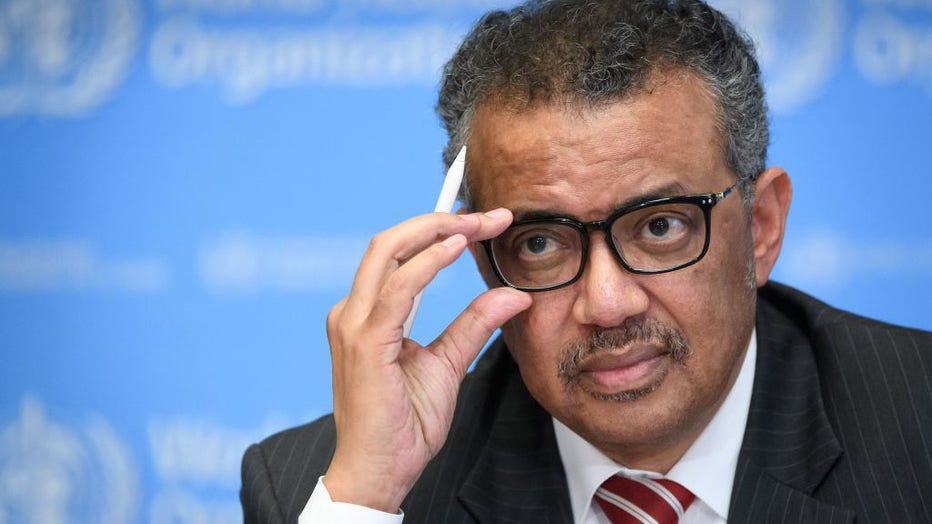WHO declared COVID-19 a pandemic on March 11, 2020 — marking the start of a long, devastating journey
On March 11, 2020, the World Health Organization declared COVID-19 a pandemic — essentially marking the start of a new era.
At the time, few could foresee the long road ahead or the many ways in which they would suffer. Over the course of the next 12 months, millions of people would die or become so sick they required hospitalization, and national economies would be devastated by public lockdowns and record unemployment.
The pandemic would disrupt the lives of nearly everyone on the planet, causing loneliness and isolation for many.
On the same day the virus was characterized as a pandemic, the NBA canceled the rest of its season and actor Tom Hanks said he and his wife, Rita Wilson, had both tested positive for the virus. Italy closed shops and restaurants after locking down in the face of 10,000 reported infections.
In what normally could have been the biggest headline of the day, a judge also sentenced Hollywood mogul Harvey Weinstein to 23 years in prison for rape and sexual assault.
Globally, confirmed cases of COVID-19 had topped 118,000 by March 11, 2020, while reported deaths were fewer than 5,000. Today, confirmed cases of COVID-19 are nearing 118 million, and more than 2.6 million people have died around the world, data from Johns Hopkins University shows.

A photo taken on March 11, 2020 shows World Health Organization (WHO) Director-General Tedros Adhanom Ghebreyesus attending a press briefing on COVID-19 at the WHO headquarters in Geneva. (Photo by FABRICE COFFRINI/AFP via Getty Images)
Just five days prior, on March 6, 2020, experts from Johns Hopkins had testified before Congress on what they knew about the coronavirus outbreak. At the time, the U.S. was reporting the seventh-highest number of cases. But the country soon began outpacing the rest of the world in both confirmed cases and deaths by a large margin.
RELATED: Couple creates private dining room in their van to support local restaurants
On the evening of March 11, 2020, President Donald Trump addressed the nation from the Oval Office, announcing restrictions on travel from Europe for 30 days that set off a trans-Atlantic scramble. Airports flooded with unmasked crowds in the days that followed until they were soon empty.
In his address, Trump blamed the European Union for not acting quickly enough to address the coronavirus and said U.S. clusters had been "seeded" by European travelers.
Dr. Anthony Fauci, the nation’s top infectious disease expert, later predicted on March 29, 2020, that the U.S. could experience more than 100,000 deaths and millions of infections from the coronavirus pandemic — a number that seemed improbable, until the nation passed it and kept climbing.
By the end of March 2020, more than 4,000 Americans had died from the virus, according to data from the COVID-19 Tracking Project, which compiles both confirmed and probably COVID-19 deaths.
By the end of April, that number was nearing 60,000 Americans. On May 27, 2020, the U.S. topped 100,000 COVID-19 deaths in total.
Throughout the summer, the American COVID-19 death toll climbed steadily, reaching 175,000 by the end of August. By Sept. 22, more than 200,000 Americans had died.
The U.S. faced a brutal surge in the winter months, climbing steadily in October and November. On Nov. 4, more than 100,000 COVID-19 cases were being reported in a single day — one of many grim milestones throughout the year.
By the end of 2020, more than 336,000 Americans had died from the virus. At the end of February, half a million lives had been lost.
Now, a year later, some are finding hope and dreaming of a return to some sense of normalcy with the speedy development of vaccines to stem the pandemic.
U.S. health regulators have approved three different COVID-19 shots for emergency use, developed by Pfizer-BioNTech, Moderna and Johnson & Johnson.
As of this week, 1 in 4 U.S. adults have now received their first shot, and close to 32 million Americans are fully vaccinated. With the recent approval of J&J’s one-dose vaccine and increased manufacturing efforts, President Joe Biden has said the country now has enough doses of the three approved vaccines to cover all U.S. adults by the middle of May.
RELATED: New Orleans hospital marks 10,000th COVID-19 recovery with jazz band sendoff
This story was reported from Cincinnati. The Associated Press contributed.

